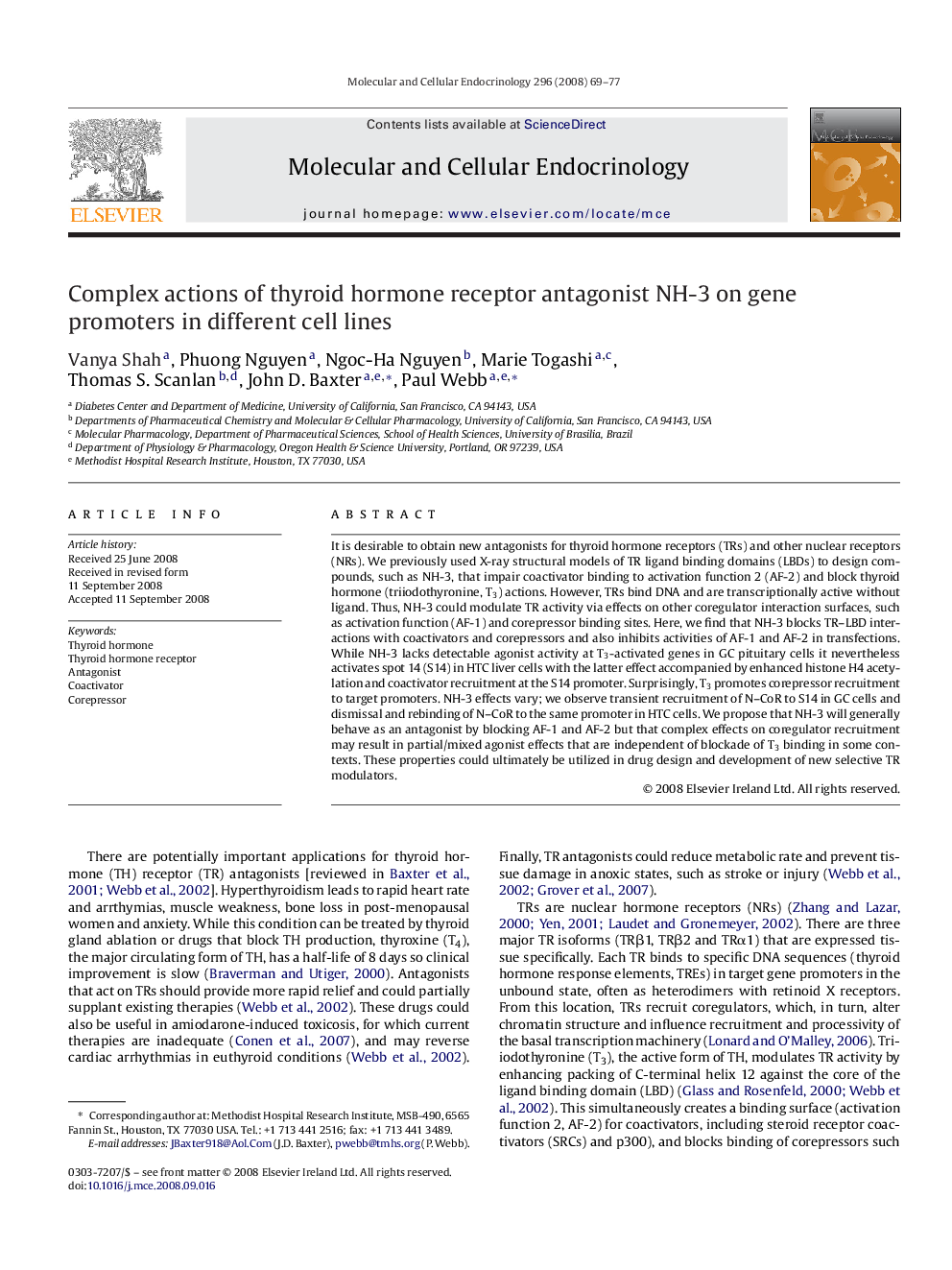| Article ID | Journal | Published Year | Pages | File Type |
|---|---|---|---|---|
| 2197516 | Molecular and Cellular Endocrinology | 2008 | 9 Pages |
It is desirable to obtain new antagonists for thyroid hormone receptors (TRs) and other nuclear receptors (NRs). We previously used X-ray structural models of TR ligand binding domains (LBDs) to design compounds, such as NH-3, that impair coactivator binding to activation function 2 (AF-2) and block thyroid hormone (triiodothyronine, T3) actions. However, TRs bind DNA and are transcriptionally active without ligand. Thus, NH-3 could modulate TR activity via effects on other coregulator interaction surfaces, such as activation function (AF-1) and corepressor binding sites. Here, we find that NH-3 blocks TR–LBD interactions with coactivators and corepressors and also inhibits activities of AF-1 and AF-2 in transfections. While NH-3 lacks detectable agonist activity at T3-activated genes in GC pituitary cells it nevertheless activates spot 14 (S14) in HTC liver cells with the latter effect accompanied by enhanced histone H4 acetylation and coactivator recruitment at the S14 promoter. Surprisingly, T3 promotes corepressor recruitment to target promoters. NH-3 effects vary; we observe transient recruitment of N–CoR to S14 in GC cells and dismissal and rebinding of N–CoR to the same promoter in HTC cells. We propose that NH-3 will generally behave as an antagonist by blocking AF-1 and AF-2 but that complex effects on coregulator recruitment may result in partial/mixed agonist effects that are independent of blockade of T3 binding in some contexts. These properties could ultimately be utilized in drug design and development of new selective TR modulators.
